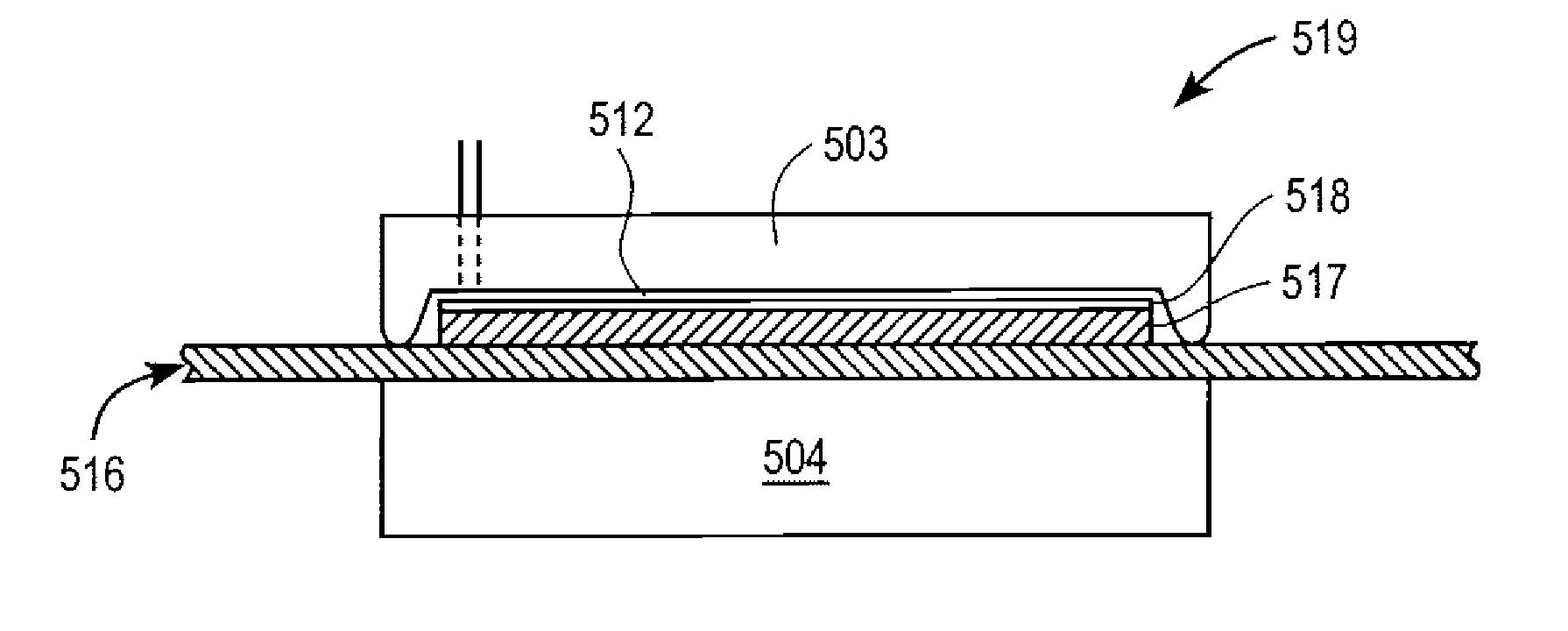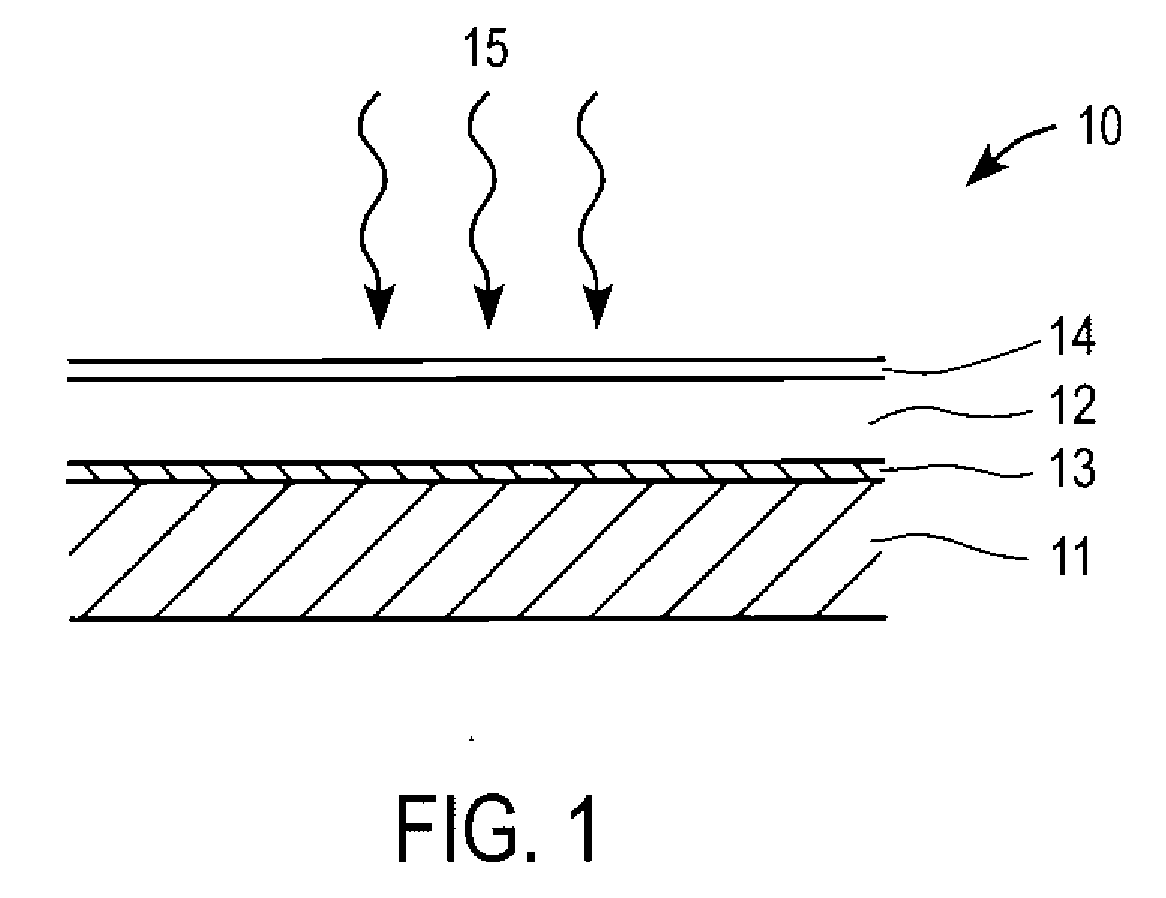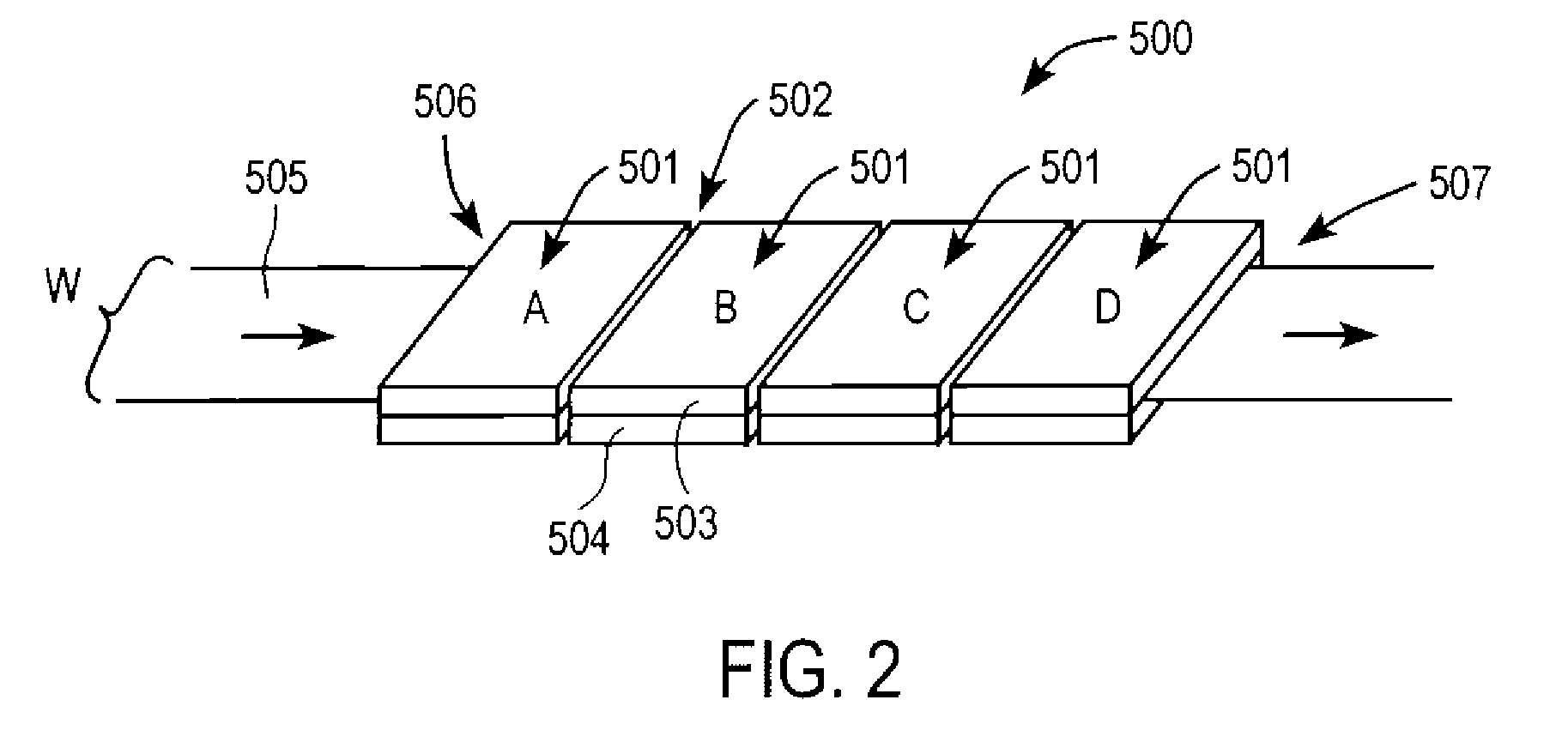Method and apparatus for converting precursor layers into photovoltaic absorbers
a technology of photovoltaic absorbers and precursor layers, which is applied in the direction of semiconductor devices, coatings, chemical vapor deposition coatings, etc., can solve the problems of high equipment cost, low material utilization, and high cost of equipment, and achieve low throughput, low material utilization, and high equipment cost
- Summary
- Abstract
- Description
- Claims
- Application Information
AI Technical Summary
Benefits of technology
Problems solved by technology
Method used
Image
Examples
example
[0050] A Mo coated stainless steel or aluminum foil may be used as the base. A metallic precursor comprising Cu, In, and Ga may be deposited oil the base. Multi-chamber process unit 603 shown in FIG. 4 may be used for the formation of a Cu(In,Ga)(S,Se)2 layer on the base. The base comprising the metallic precursor layer is depicted in FIG. 4 as substrate 602. The process unit 603 has chambers or sections indicated by dotted lines and labeled as A, B, C, D and E. The process unit has a single top body 600 and a single bottom body 601. Within the top body 600 and the bottom body 601 there are independent heating means to independently change and control temperatures of the individual sections A, B, C, D and E. There are also independent gas lines 604 that may act as gas inlets or outlets for each section.
[0051] In this example, section A is used for Se deposition oil the metallic precursor. Section B is used for initial reaction at a temperature of 150-250° C. Section C is used for c...
PUM
| Property | Measurement | Unit |
|---|---|---|
| Length | aaaaa | aaaaa |
| Temperature | aaaaa | aaaaa |
| Flexibility | aaaaa | aaaaa |
Abstract
Description
Claims
Application Information
 Login to View More
Login to View More - R&D
- Intellectual Property
- Life Sciences
- Materials
- Tech Scout
- Unparalleled Data Quality
- Higher Quality Content
- 60% Fewer Hallucinations
Browse by: Latest US Patents, China's latest patents, Technical Efficacy Thesaurus, Application Domain, Technology Topic, Popular Technical Reports.
© 2025 PatSnap. All rights reserved.Legal|Privacy policy|Modern Slavery Act Transparency Statement|Sitemap|About US| Contact US: help@patsnap.com



